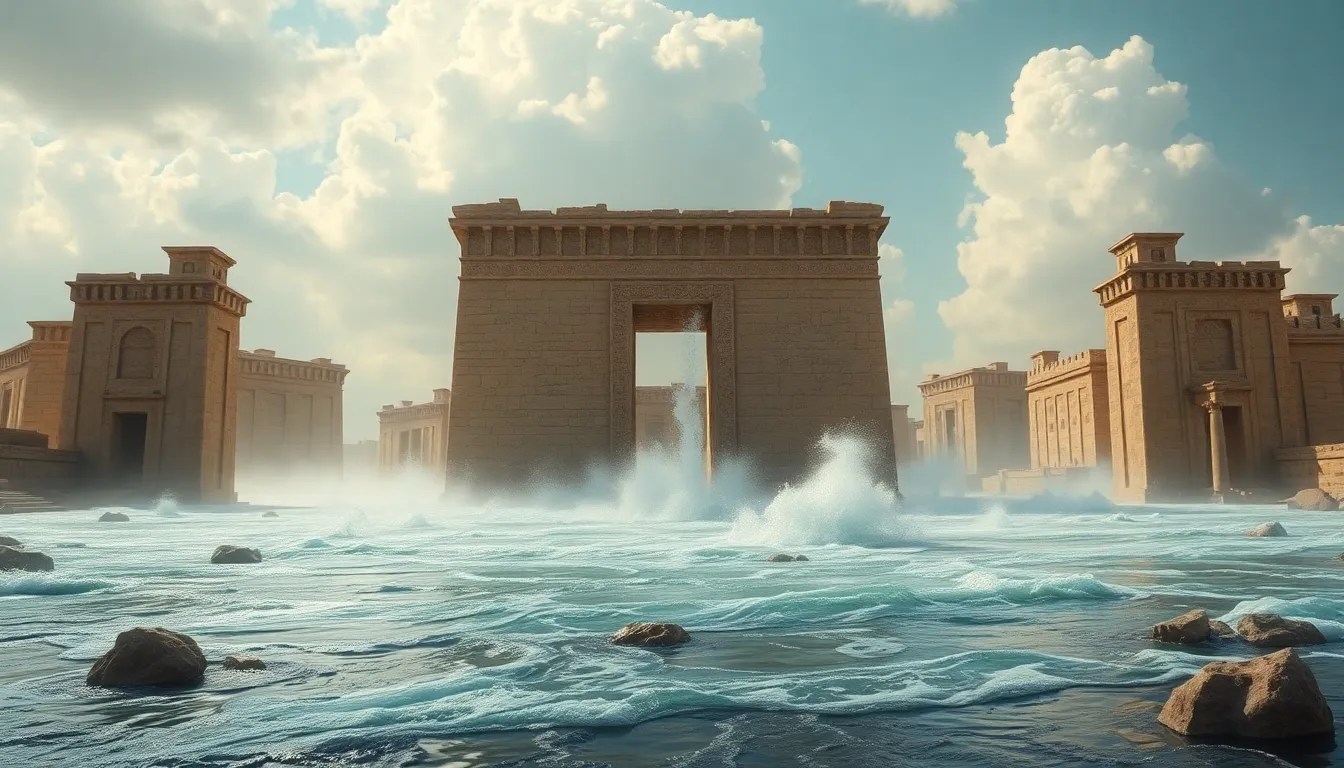The Role of the Flood in Shaping Mesopotamian Identity
I. Introduction
Mesopotamian civilization, often referred to as the “cradle of civilization,” emerged between the Tigris and Euphrates rivers, laying the foundation for urban society, writing, and complex governance. Its significance extends beyond mere historical facts; it profoundly influenced subsequent cultures and civilizations.
Myths played a crucial role in defining cultural identity among the Mesopotamians, serving as narratives that explained the world around them and their place within it. Among these narratives, the flood myth stands out as a central theme, encapsulating the relationship between humanity, the divine, and nature.
This article explores the flood myth’s origins, variations, theological implications, socio-political context, cultural memory, archaeological evidence, and modern interpretations, highlighting its impact on shaping Mesopotamian identity.
II. The Flood Myth: Origins and Variations
The flood myth is prominently featured in the Epic of Gilgamesh, one of the oldest known literary works. In this epic, Utnapishtim, a figure akin to Noah, is warned by the god Ea about an impending flood meant to cleanse the earth of humanity’s sins. Utnapishtim builds a large boat, saves his family and various species, and ultimately finds rest on a mountain after the floodwaters recede.
Variations of the flood narrative appear in other ancient texts, such as the Atrahasis and the Hebrew Bible’s account of Noah. Each version shares common elements but also reflects unique cultural contexts and theological insights:
- Atrahasis: Focuses on the need for humanity to appease the gods to prevent flooding.
- Biblical Flood: Emphasizes divine covenant and the promise never to destroy the earth again.
These regional variations underscore the flood myth’s significance across cultures, demonstrating its adaptability and the diverse interpretations of divine will and human morality.
III. Theological Implications of the Flood
The flood myth serves as a powerful representation of divine power and wrath. It illustrates the belief that gods could unleash catastrophic events to punish humanity for its transgressions. This theme highlights the complex relationship between humans and gods in Mesopotamian belief systems, where divine favor was essential for survival and prosperity.
The flood acts as a mechanism of divine judgment, symbolizing both punishment and renewal. It reflects the idea that destruction can lead to a new beginning, aligning with the cyclical nature of life and the agricultural seasons.
IV. The Socio-Political Context of the Flood Myth
The flood narrative played a significant role in legitimizing kingship and authority in Mesopotamian society. Rulers often linked themselves to divine figures and events through these myths, asserting their right to govern by claiming divine endorsement.
Furthermore, the flood serves as a metaphor for societal upheaval and rebirth, resonating with historical events such as climate changes or invasions that disrupted Mesopotamian life. This narrative could reflect the collective trauma of the populace while also offering hope for renewal and restoration.
V. The Flood and Cultural Memory
The impact of the flood myth on Mesopotamian literature and art is profound. It inspired countless works, from cylinder seals depicting the flood to poetry that echoed its themes of survival and divine intervention. Oral traditions played a crucial role in preserving these narratives, ensuring their transmission across generations.
The flood myth also influenced later cultures and religions, providing a foundation for similar stories in various contexts. Its themes of destruction and renewal resonate universally, making it a timeless narrative.
VI. Archaeological Evidence and Historical Context
Archaeological findings in ancient Mesopotamia offer insights into the relationship between flooding and the development of urban society. Evidence of ancient floods, such as sediment layers, supports the idea that catastrophic events shaped the landscape and influenced settlement patterns.
The environmental factors contributing to flooding, such as the region’s rivers, are intertwined with the flood myth. These natural occurrences likely inspired the mythological narratives, serving as a reflection of humanity’s struggle against nature.
Insights from ancient texts and artifacts further illuminate the flood myth’s significance, revealing how it informed societal values and beliefs.
VII. Modern Interpretations and Legacy
The relevance of the flood myth persists in contemporary discussions of cultural identity. It serves as a powerful symbol of resilience and transformation in the face of adversity. Modern literature and media often revisit these themes, exploring the human condition through the lens of ancient narratives.
The flood myth continues to captivate popular culture, inspiring movies, novels, and art. Its enduring legacy is a testament to the power of storytelling and mythology in shaping human experience across time and space.
VIII. Conclusion
The flood myth plays a crucial role in shaping Mesopotamian identity, serving as a narrative that encapsulates the relationship between humanity, the divine, and the natural world. Its theological, socio-political, and cultural implications reveal deep insights into Mesopotamian society and its values.
The enduring significance of the flood myth invites further exploration of how mythology influences cultural identities worldwide. As we delve into the stories of the past, we uncover the threads that connect us across time and space, reminding us of our shared humanity.



